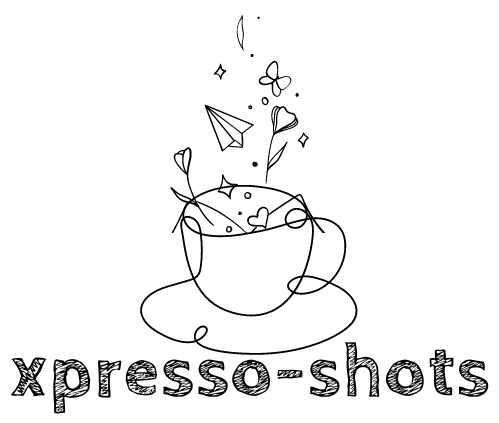Conflict is an inevitable part of life, whether it’s in our personal relationships or within the walls of organisations. Managing conflicts effectively is a crucial skill that can make the difference between thriving relationships and dysfunctional environments. In this article, we’ll explore the intricacies of conflict management, from understanding its various types to mastering strategies for resolution.

Table of Contents
I. Conflict Management
- Definition of Conflict Management
- Conflict management involves the process of identifying, addressing, and resolving conflicts in a constructive and positive manner. It’s not about avoiding conflicts altogether but dealing with them in a way that leads to growth and understanding.
- Importance of Effective Conflict Management
- Effective conflict management is vital for maintaining healthy relationships and fostering a positive organizational culture. It ensures that disagreements don’t escalate into destructive disputes, leading to improved communication and collaboration.
II. Types of Conflicts
- Intrapersonal Conflicts
- These conflicts occur within an individual’s mind, involving internal struggles and contradictory thoughts. Learning to manage intrapersonal conflicts is essential for personal growth and self-awareness.
- Interpersonal Conflicts
- When conflicts arise between individuals, effective interpersonal conflict management becomes crucial. This includes addressing issues like miscommunication, misunderstandings, and differences in perspectives.
- Organizational Conflicts
- Within the workplace, conflicts may arise due to competing goals, power struggles, or resource limitations. Effective conflict management at the organizational level is essential for maintaining a productive work environment.
III. Common Causes of Conflict
- Communication Issues
- Miscommunication is a common trigger for conflicts. This section will explore the role of effective communication in preventing and resolving disputes.
- Differences in Values and Goals
- Understanding and respecting diverse values and goals is key to managing conflicts arising from differing perspectives.
- Limited Resources
- Scarcity of resources can lead to conflicts, and effective conflict management involves finding equitable solutions to resource-related disputes.
- Power Struggles
- Examining power dynamics and addressing power struggles is crucial for resolving conflicts within organizations and relationships.
IV. Challenges in Conflict Management
- Resistance to Change – Dealing with resistance when implementing conflict resolution strategies.
- Unresolved Issues – Addressing challenges that may arise when conflicts persist or are not adequately resolved.
- Cultural Differences – Navigating conflicts that stem from cultural diversity within organizations.
- Power Imbalances – Conflicts may arise when there are perceived or actual imbalances in power within a team or organization. Leading to resistance, feelings of injustice, and hinder collaborative conflict resolution.
- Lack of Trust – Trust issues between individuals or within teams can impede open communication and collaborative problem-solving.
- Lack of Formal Conflict Resolution Processes – Organizations without established conflict resolution mechanisms may struggle to address disputes effectively.
V. Models and Concepts used to resolve conflict
Thomas-Kilmann Conflict Mode Instrument (TKI):
- Description: This model identifies five conflict-handling styles – competing, collaborating, compromising, avoiding, and accommodating – helping individuals understand and choose appropriate responses to conflicts based on assertiveness and cooperativeness.
- Application at Workplace: Suppose two team members have conflicting ideas about a project approach. Using TKI, they can both assess their conflict-handling styles. If one is more inclined towards collaboration and the other towards competition, understanding these differences can lead to a compromise or integrative solution that benefits the project.
Interest-Based Relational Approach (IBR):
- Description: Focuses on identifying the underlying interests and needs of conflicting parties to find mutually beneficial solutions. Also known as interest-based negotiation.
- Application at Workplace: In a team where members are disagreeing on task assignments, IBR would involve exploring each member’s interests and needs. For instance, if one team member prefers more independent tasks due to a need for autonomy, while another values collaboration, the team can find a balance in task distribution that satisfies both needs.
The Dual Concern Model:
- Description: Developed by Dean G. Pruitt and Peter J. Carnevale, this model suggests that people’s behavior in conflict is based on two key concerns – a concern for their own outcomes and a concern for the outcomes of the other party.
- Application at Workplace: Consider a situation where two colleagues are vying for a promotion. Understanding each other’s concerns (e.g., one values career progression, while the other values a healthy work-life balance) can lead to a negotiation or collaboration to find a solution that addresses both individuals’ aspirations.
Win-Win Negotiation Model:
- Description: Emphasizes creating solutions where both parties gain and fostering cooperation rather than competition. Often associated with the integrative or collaborative approach to conflict resolution.
- Application at Workplace: In a scenario where there’s a disagreement over project resources, applying the win-win model involves brainstorming and finding creative solutions that benefit both parties. For instance, reallocating resources or finding alternative ways to meet project goals without compromising individual team members’ needs.
C.A.R.E. Model (Collaborate, Avoid, Resolve, and Engage):
- Description: A model that encourages individuals to consider different conflict resolution strategies based on the specific context and desired outcomes.
- Application at Workplace: If there’s a conflict arising from miscommunication within a team, the C.A.R.E. model suggests engaging in open communication to understand the root causes, collaborating on solutions, and actively resolving the issues to maintain a positive work environment.
Situational Leadership Model:
- Description: Proposes that effective leaders adapt their leadership style based on the maturity or readiness of the individuals they are leading. Relevant to conflict management as leaders may need different approaches in various situations.
- Application at Workplace: When managing conflicts within a team, leaders can adapt their leadership style based on the maturity or readiness of team members. For instance, a leader may take a more directive approach during the early stages of conflict resolution and gradually shift towards a supportive role as the team members become more adept at handling the conflict themselves.
Interest-Based Bargaining:
- Description: A collective bargaining approach that focuses on the underlying interests of parties rather than their positions. It aims to find creative solutions that meet the needs of all involved.
- Application at Workplace: In labor-management negotiations over working conditions, interest-based bargaining involves identifying shared interests. For example, both parties may share an interest in employee well-being, leading to collaborative solutions such as flexible work hours or improved benefits.
The Circle of Conflict Model:
- Description: Developed by Michelle LeBaron, this model visualizes conflicts as occurring within a circle, with different stages such as latent conflict, perceived conflict, felt conflict, manifest conflict, and aftermath. It helps in understanding the dynamics of conflict escalation and resolution.
- Application at Workplace: If there’s a visible escalation of conflict within a team, the Circle of Conflict Model suggests addressing the latent and perceived conflict stages before they manifest. For example, conducting team-building activities and fostering open communication can prevent conflicts from escalating to a more detrimental stage.
GRIT (Graduated and Reciprocated Initiatives in Tension-Reduction):
- Description: A strategy for de-escalating conflicts through persistent, low-level initiatives and positive gestures to build trust and encourage reciprocity.
- Application at Workplace: In a situation where there’s tension between two departments due to perceived competition, applying GRIT involves initiating small gestures of collaboration, such as joint projects or shared resources, to gradually build trust and reduce tension.
Nonviolent Communication (NVC):
- Description: Developed by Marshall Rosenberg, NVC is a communication process that focuses on empathetic listening, expressing feelings and needs, and finding mutually satisfying solutions, particularly in situations of conflict.
- Application at Workplace: In a team where conflicts arise from misunderstandings, NVC encourages team members to express their feelings and needs openly. For example, a team member might use NVC to communicate that they feel overwhelmed by their workload and need support, leading to a more empathetic response from their colleagues.
VI. The Role of Emotional Intelligence in Conflict Management
- Self-Awareness:
- Understanding Own Emotions: Individuals with high EI are adept at recognizing and understanding their own emotions during conflict situations. This self-awareness allows them to approach conflicts with a clear understanding of their feelings, preventing impulsive reactions.
- Self-Regulation:
- Emotional Control: EI enables individuals to regulate their emotions effectively. In conflict situations, those with strong self-regulation can manage stress, frustration, or anger, preventing emotional outbursts that could escalate the conflict.
- Empathy:
- Understanding Others’ Perspectives: EI fosters empathy, the ability to understand and share the feelings of others. This skill is invaluable in conflict resolution as it allows individuals to see the situation from multiple perspectives, promoting a more comprehensive and empathetic approach to finding solutions.
- Effective Communication:
- Expressing Emotions Clearly: Individuals with high EI are skilled communicators, capable of expressing their emotions clearly and assertively without aggression. This facilitates open and honest communication during conflicts, reducing misunderstandings and promoting a more constructive dialogue.
VII. Training and Development in Conflict Management
- Training and Development Workshops:
- Breakfree Consulting conducts workshops and seminars on Conflict Resolution, tailoring them to meet the specific needs and organizational setup of clients. These sessions leverage various conflict management models, and participants can choose from different formats, including in-person sessions, virtual facilitator-led programs, or self-learning options via video/e-learning. The duration of these workshops ranges from concise 60-minute sessions to immersive 2-day interventions.
- Personalized 1 on 1 Coaching:
- In addition to group sessions, Breakfree Consulting offers personalized 1×1 coaching. This individualized coaching enhances participants’ conflict resolution skills, providing valuable insights and practical techniques tailored to their specific professional challenges.
- Flexible Learning Formats:
- Participants have the flexibility to choose the learning format that suits them best. Whether through traditional in-person workshops, virtual facilitator-led sessions for remote engagement, or self-paced video/e-learning options, Breakfree Consulting ensures that individuals can access conflict resolution training in a manner that aligns with their preferences and organizational requirements.
VIII. Case Studies in Successful Conflict Management
- Problem Statement:
- One of the top 10 IT giants in the world, faced a significant problem related to interdepartmental conflicts. Communication breakdowns between the development and testing teams were leading to delays in project timelines and a decrease in overall team morale. The conflict stemmed from differing priorities, communication styles, and a lack of understanding of each team’s roles and responsibilities. This was negatively impacting project delivery, team collaboration, and, ultimately, the company’s client satisfaction.
- Diagnostic:
- To diagnose the conflict, Breakfree Consulting team conducted interviews and surveys with team members from both the development and testing teams. The diagnostic phase revealed that there was a lack of clarity in project expectations, limited communication channels between the teams, and an absence of team-building activities. Emotions were running high due to misunderstandings, and the existing conflict resolution mechanisms were proving ineffective.
- Solution: Breakfree Consulting team devised a comprehensive conflict resolution plan:
- Customized Workshops: In-person and virtual workshops were conducted, focusing on communication skills, team building, and conflict management using models such as TKI and interest-based relational approaches.
- Individual Coaching: 1×1 coaching sessions were provided to key team members to address specific concerns and enhance interpersonal skills.
- Clear Communication Channels: Improved communication channels were established, including regular cross-team meetings and a shared project management platform to enhance transparency and collaboration.
- Team-Building Activities: Structured team-building activities were introduced to foster better understanding and trust between the development and testing teams.
- Impact:
- Improved Project Timelines: The resolution of conflicts resulted in a 20% reduction in project delivery times, allowing the company to meet deadlines more efficiently.
- Enhanced Team Morale: Employee satisfaction surveys indicated a 25% increase in team morale, as team members reported feeling more supported and engaged in their work.
- Client Satisfaction: Client feedback surveys showed a notable 15% increase in overall satisfaction, citing improved communication, timely deliveries, and a positive project experience.
IX. The Future of Conflict Management with AI
1. Data-Driven Conflict Analysis:
- Opportunity: AI systems can analyze vast amounts of data to identify patterns, trends, and potential sources of conflict within an organization.
- Challenge: Dependence on AI for conflict analysis may raise concerns about data privacy, bias, and the need for human intuition in understanding nuanced interpersonal dynamics.
2. AI-Powered Mediation and Resolution:
- Opportunity: AI-driven algorithms can provide real-time insights and suggestions for conflict resolution strategies based on historical data and best practices.
- Challenge: Relying solely on AI may overlook the emotional and cultural nuances involved in conflict, potentially leading to solutions that lack empathy or human touch.
3. Virtual Conflict Resolution Platforms:
- Opportunity: AI-driven virtual platforms can facilitate online conflict resolution sessions, providing a convenient and accessible environment for parties involved.
- Challenge: Ensuring the security and confidentiality of sensitive information on virtual platforms is crucial, and AI should complement, not replace, human mediators in sensitive cases.
4. Predictive Analytics for Conflict Prevention:
- Opportunity: AI can predict potential conflict triggers by analyzing historical data, helping organizations implement preventive measures.
- Challenge: Overreliance on predictive analytics may lead to over-generalization, overlooking unique contextual factors that contribute to conflicts.
5. Natural Language Processing (NLP) in Communication:
- Opportunity: NLP in AI enables more effective communication analysis, helping identify key issues and emotions in written or verbal exchanges.
- Challenge: The contextual intricacies of human communication may pose challenges for NLP algorithms, requiring continuous refinement to accurately interpret nuanced language.
X. Conclusion
Conflicts happen, but facing them is vital for growth. Challenges, like communication issues, are tough but solvable. We explored ways to handle conflicts, emphasizing communication and adaptation. Real-life examples, like one of the top 10 IT giants, showed positive outcomes.
Looking ahead, AI can help, but human touch is crucial. In essence, conflicts are part of life, and learning to handle them creates opportunities for growth and a more peaceful world.
FAQs (Frequently Asked Questions)
- Q: Is conflict always a negative thing? A: No, conflicts can lead to growth and understanding if managed effectively.
- Q: How can I improve my conflict resolution skills? A: Practice active listening, learn effective communication, and consider conflict resolution workshops.
- Q: What role does emotional intelligence play in conflict management? A: Emotional intelligence is crucial for recognizing and regulating emotions during conflicts.
- Q: Are there situations where avoiding conflict is appropriate? A: Yes, in certain situations, avoiding conflicts or accommodating others’ needs may be the best approach.
- Q: Can technology aid in conflict resolution? A: Yes, technology can influence the identification and resolution of conflicts, especially in the workplace.


Thanks for sharing. I read many of your blog posts, cool, your blog is very good.